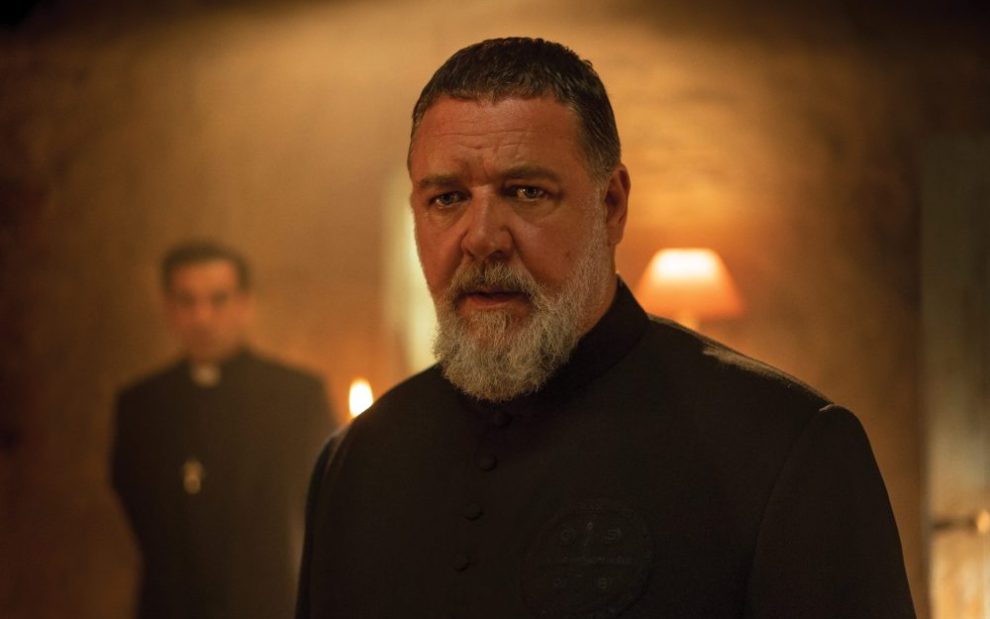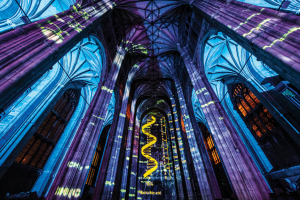On the surface, the Catholic Church can seem downright staid and stuffy. Our ministers wear antique ceremonial garb and sometimes chant in a style that hasn’t made the charts in 500 years. Except for the brief homily, every word of our service is read from a book. But beneath that sometimes-somnolent surface, Catholicism is, in fact, a deeply weird religion.
First, there’s the regular business of holy oils, holy water, incense, and, of course, the mystical act of cannibalism at the center of it all. Then there’s the stuff many contemporary Catholics don’t want to talk about, such as the exorcism of demons or the strange, unexplained phenomena associated with some of our saints. Those elements, however, are front and center in two movies about real-life Catholic priests, Padre Pio and The Pope’s Exorcist, both released this spring.
Padre Pio got a round of prerelease publicity last year when Shia LaBeouf, who plays the Franciscan friar, went public with his conversion to Catholicism. The movie was also highly anticipated because its director, Abel Ferrara (an American who now lives and works in Italy), is best known for films featuring sex and violence (Bad Lieutenant, et al.) and a life featuring some pretty hardcore drug abuse.
The movie was certainly highly anticipated at our house, where Padre Pio has long been a hero. Years ago we spent two evenings watching all three-plus hours of the Italian TV movie, Padre Pio: Miracle Man, and one of my sons took Padre Pio as his confirmation saint. So if you’re looking for a skeptical take on Padre Pio’s stigmata or his hand-to-hand combat with the evil one, you won’t get it here. In fact, I was a little disappointed that Ferrara’s movie didn’t show us some of Pio’s other saintly superpowers such as bilocation.
However, Ferrara and LaBeouf do put Padre Pio’s spiritual warfare on full cinematic display. The monk is repeatedly battered and tossed around his cell by demonic forces invisible to others but plainly evident to him as spiritual beings sent to derail an extraordinary life of prayer and service. Meanwhile, in the movie, Pio’s burdensome gift of the stigmata is subtly suggested rather than put on garish display.
The good news about Padre Pio is in its serious treatment of religious belief and spiritual practice. While LaBeouf brings a convert’s zeal to his work here, Ferrara is a lapsed Catholic and recovering addict who has, in sobriety, become a Buddhist. In his Italian TV documentary, Searching for Padre Pio, Ferrara, while not naysaying the miraculous healings associated with the friar, insists that his greatest miracle was the founding of a hospital, the Home for Relief of Suffering, in the small town of San Giovanni Rotondo, which now treats 60,000 patients per year.
Unfortunately, any good that may come from Padre Pio’s respectful take on the saint and his church is largely undone by the movie’s murky and mystifying narrative structure.
Set in the years immediately after World War I, Padre Pio has parallel plots depicting Pio’s spiritual struggle in the monastery at the edge of San Giovanni Rotondo and the material struggle of the villagers organizing a socialist rebellion against their landowners. The people’s story ends with a scene of bloody fascist repression, and Pio’s ends with the arrival of the stigmata. But we’re left completely on our own regarding what (if anything) one has to do with the other. I could posit a sound theological explanation about the suffering of the poor being one with the suffering of Christ. But I can’t find evidence for that reading in the movie itself. And to further confuse things, as the film does show us, in the early 20th century the Catholic Church saw Marxist atheism as a bigger problem than capitalist oppression.
Still, even given that major caveat, Padro Pio does have a harsh beauty and spiritual urgency that put me in mind of the 1964 The Gospel According to St. Matthew, a starkly realistic cinematic rendering of Jesus’ life by the gay communist writer and filmmaker Pier Paolo Pasolini. That’s probably no accident, since Ferrara also made the 2014 biopic Pasolini.
The Pope’s Exorcist, on the other hand, is all about delivering a gut-level, action-movie catharsis. Good (represented by Russell Crowe) vanquishes Evil on a big screen with lots of loud and frightening special effects. Yet The Pope’s Exorcist is a much more Catholic production than Ferrara’s art house curio. This movie’s executive producer is Jesuit Father Edward Seibert, a priest who runs Loyola Productions. Seibert obtained the film rights for Father Gabriele Amorth’s books about his career as an exorcist and shepherded the project through the development process.
The movie that resulted is more a popcorn-selling fantasy than an actual account of Father Amorth’s work, the precise details of which may be difficult to parse out, given conflicting reports about Amorth’s reliability. But it does depict a pope and a few priests as men of real faith and courage. Those who knew him confirm that Amorth had a sly sense of humor about his very serious work. For example, he often began exorcisms by thumbing his nose at his demonic adversary, and that spirit comes through in Crowe’s performance.
From their very different vantage points in the pop culture landscape, both these movies suggest that the strange and supernatural elements of Catholicism, far from putting off postmodern generations, could be a point of entry.
This article also appears in the August 2023 issue of U.S. Catholic (Vol. 88, No. 8, pages 36-37). Click here to subscribe to the magazine.
Image: © 2023 CTMG, Inc./Jonathan Hession















Add comment